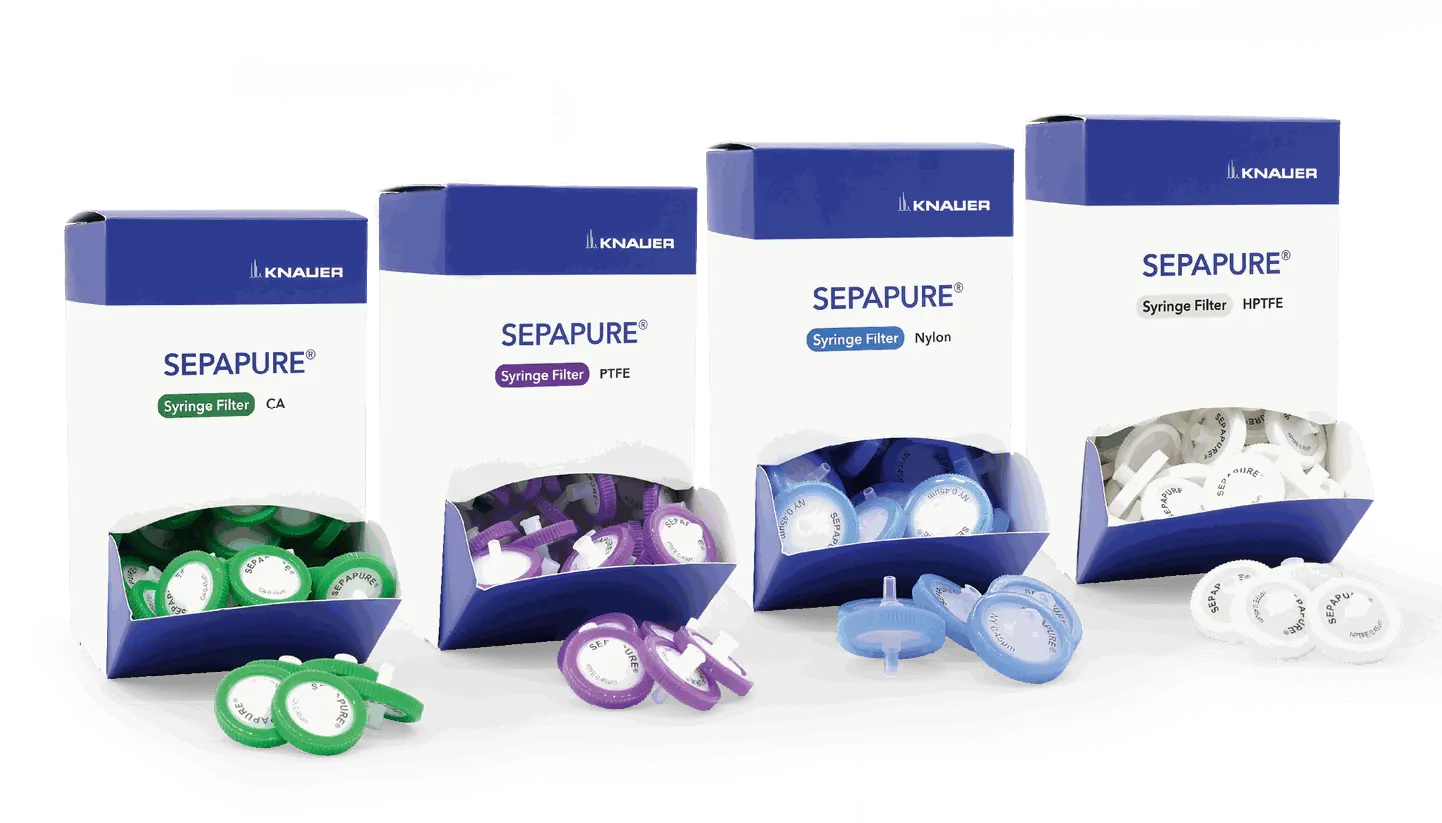A Practical Guide with Tips & Tricks to Master Syringe Filter Use
Syringe filters are essential for chromatography and laboratory work by ensuring that samples are clean and free from particles. However, choosing the wrong filter — or misusing it — can result in contamination, clogged membranes, or ultimately, inaccurate results. Here’s how to avoid the most common mistakes and achieve the best performance from your syringe filters.
1. Mishandling the Filter
Applying too much pressure or reusing disposable filters leads to membrane damage or cross-contamination.
✔ Solution: Use gentle, steady pressure and never reuse single-use filters. If filtration slows down significantly, replace the filter rather than forcing liquid through.
2. Choosing the Wrong Pore Size
Selecting the incorrect pore size for filtration can either allow unwanted particles to pass through or cause the filter to clog up too quickly.
✔ Solution: Use a pore size of 0.45 µm for general particle removal and 0.22 µm for finer filtration and bacterial removal. For viscous samples, consider using a pre-filter to avoid clogging. Also, take into consideration, what your filtrate is being used in; for example, use a 0.22 µm filter for UHPLC or LC-MS and a 0.45 µm filter for routine HPLC applications.
3. Using an Incompatible Membrane
Not all membranes work with every solvent — some might degrade, contaminate samples, or fail completely.
✔ Solution: Always check a chemical compatibility chart. PTFE is suitable for organic solvents, while PES and nylon work best for aqueous solutions. When in doubt, conduct a small-scale test first to prevent any potential sample loss.
💡 Pro-Tip: Take a look at our blog post titled “How to Choose the Right Membrane for your Syringe Filter” for more detailed insights.

KNAUER Sepapure® Syringe Filter. Different membrane materials available, color-coded for quick and easy identification. Photo by KNAUER
4. Neglecting Filter Capacity
A low-capacity filter will clog too fast, slowing down your workflow.
✔ Solution: For large sample volumes, opt for high-capacity filters or consider adding a pre-filtration step. And remember, don’t force liquid through a clogged filter — it can compromise your results.
5. Overlooking Adsorption Issues
Some membranes can retain target compounds, affecting your final analysis.
✔ Solution: Use low-protein-binding filters (e.g., nylon or glass fiber) when working with proteins or sensitive molecules. Running a quick pre-test helps you avoid unexpected losses.
6. Not Optimizing Filtration Speed
Slow filtration isn’t just frustrating — it can indicate a problem.
✔ Solution: If filtration is sluggish, check for clogging, high viscosity, or an overly fine pore size. Consider diluting the sample or using a stepped filtration approach.
Final Thoughts
Sepapure® Syringe Filter Selection. Photo by KNAUER
Choosing the right syringe filter isn’t complicated, but even small mistakes can lead to big consequences. By understanding membrane compatibility, pore size, and proper handling techniques, you’ll improve lab efficiency, protect your chromatography columns, and ensure consistent and trustworthy results every time.
Happy filtering!
Keep your process smooth and efficient by choosing the ideal KNAUERoriginals Sepapure® syringe filter. Discover your perfect match right here.
For even more in-depth information, don’t miss out on our KNAUERoriginals HPLC Consumables Brochure.
For further information on this topic, please contact our author: huhmann@knauer.net


